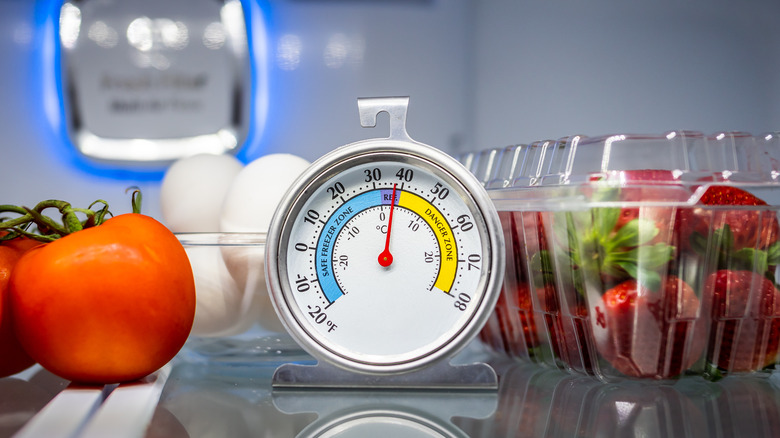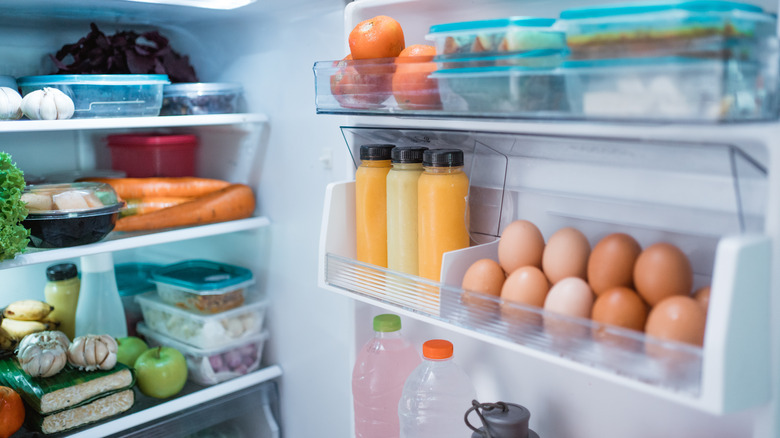The Ideal Temperature To Set Your Fridge, According To The USDA
There a few mistakes everyone makes with their refrigerator. Maybe you store your milk and eggs in the door of the fridge instead of in the back where it's coldest or perhaps you put off changing the water filter for a few days, or even weeks, past its expiration. The thing is, when it comes to the refrigerator, a lot of these simple mistakes can turn into major safety concerns.
Anything you do that messes with the temperature of your fridge should be given the highest level of attention. That's because if the temperature of your fridge is too high, it could lead to bacterial growth. That doesn't just make your food spoil fast, but also increases the chances that you or a family member will get sick after eating tainted leftovers from the fridge (via FDA). It's kind of scary, so Mashed asked a technical information specialist from the USDA Food Safety and Inspection Service to share the best temperature for your fridge.
You shouldn't let your fridge get this hot
The warmest temperature you should set your fridge to is 40 degrees Fahrenheit, according to USDA Food Safety and Inspection Service expert Meredith Carothers. You should never let your refrigerator go past this temperature because it could lead to faster food spoilage and dangerous bacterial growth. Carothers recommends using an appliance thermometer or a thermometer specifically made for refrigerators to verify that the temperature control on your refrigerator is correct. According to Real Simple, keeping the temperature even lower than 40 degrees, around 38 degrees max, is a better idea and Consumer Reports recommends 37 degrees. That way, when you open the door to the fridge and it loses cold air, you don't risk the temperature spiking above 40 degrees.
As for the low temperature, you shouldn't set your fridge to go below 35 degrees, or you'll risk some of your food frosting or totally freezing. This won't lead to bacterial growth, but cans and jars that freeze can explode or shatter, and being frozen can change a food's texture once thawed.

